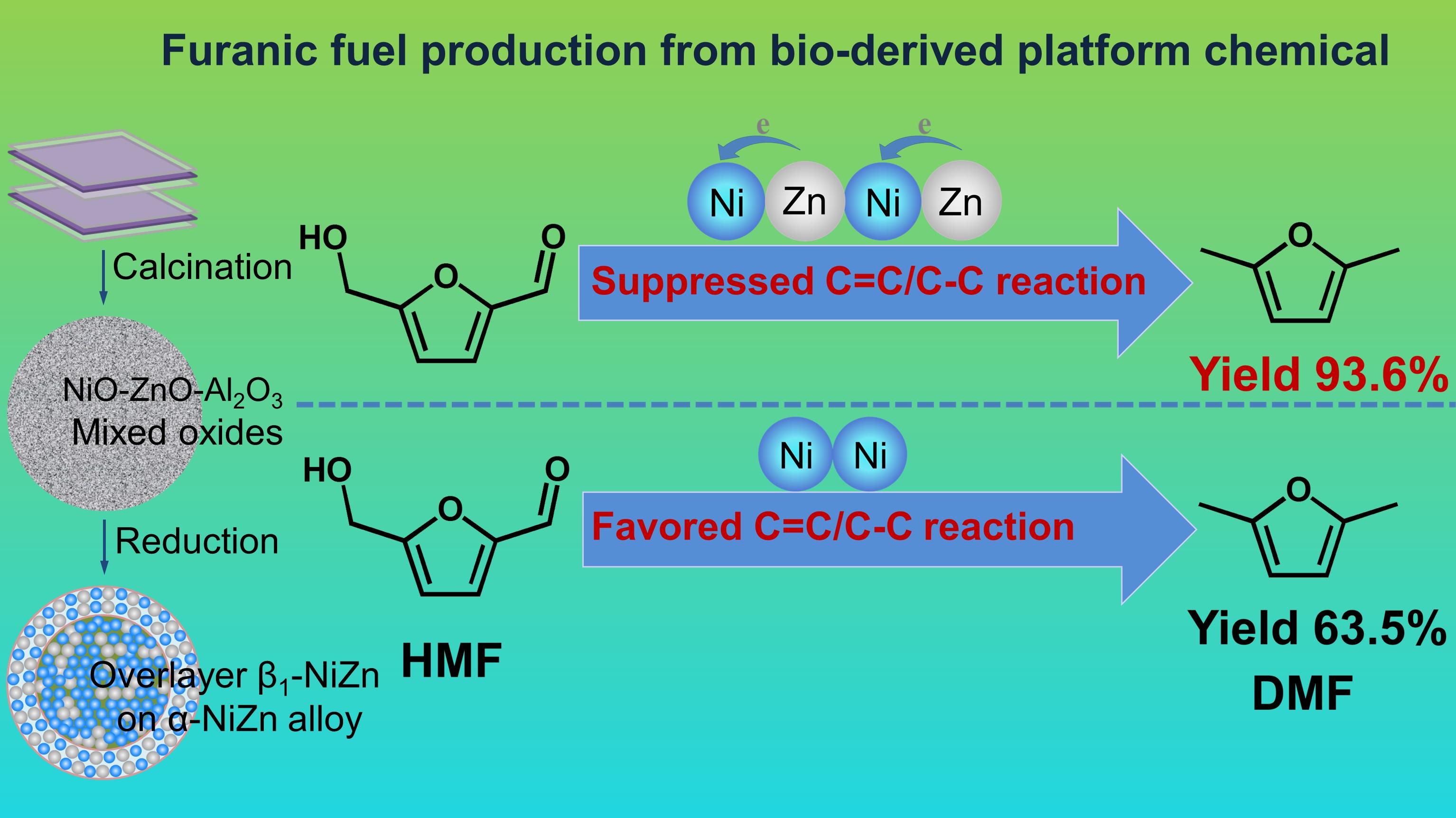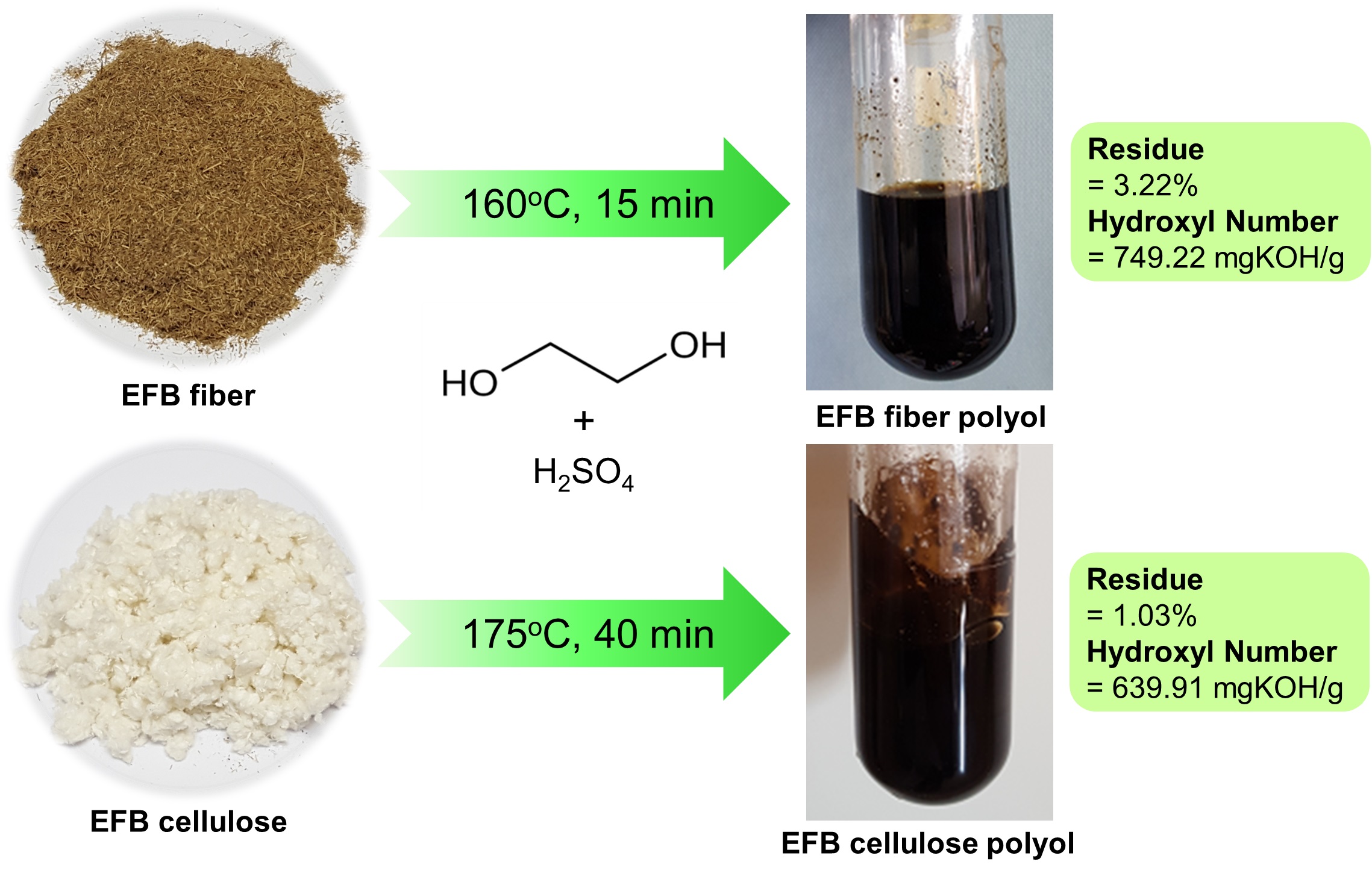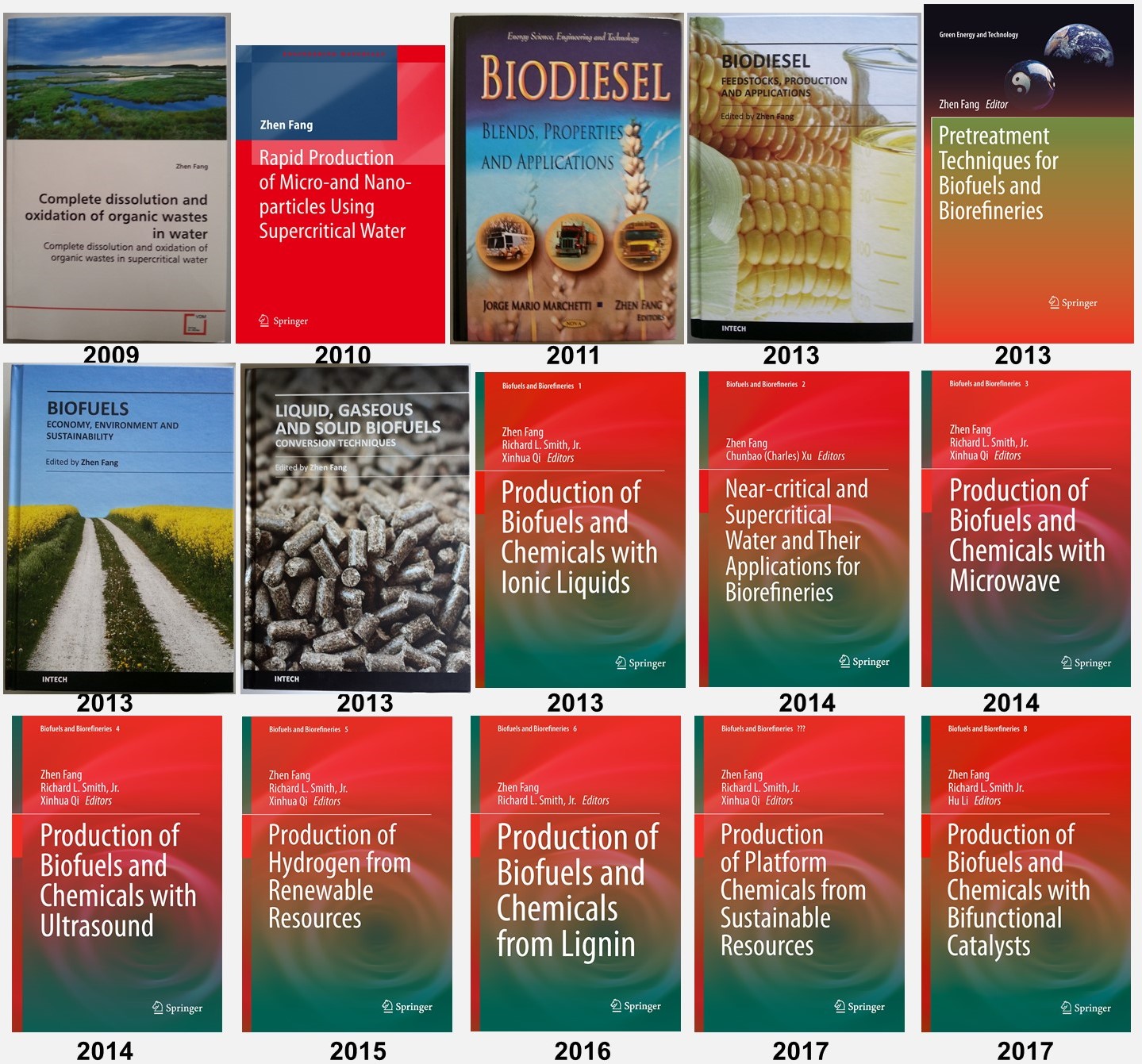Inclusion of Zn into Metallic Ni Enables Selective and Effective Synthesis of 2,5-Dimethylfuran
星期三, 6 12 月, 2017Inclusion of Zn into Metallic Ni Enables Selective and Effective Synthesis of 2,5-Dimethylfuran
Recently, Dr. X. Kong supervised by Profs. Y Zhu (Chinese Academy of Sciences) and Zhen Fang developed a highly selective Ni-based alloy catalyst for furanic fuel production from 5-hydroxymethylfurfuran. The NiZn alloy catalyst was formed through Zn inclusion to Ni by controllable reduction of the NiZnAl hydrotalcite-derived NiO–ZnO–Al2O3 mixed oxide. The combination of temperature-programmed reduction (TPR), in situ X-ray diffraction (XRD), CO-adsorbed infrared spectroscopy (CO-IR), and X-ray photoelectron spectroscopy (XPS) revealed that the surface of the NiZn catalyst was composed of β1-NiZn while the bulk was composed of α-NiZn. Moreover, the surface Ni atoms were geometrically isolated by Zn atoms and modulated to be electron-rich. Finally, the rate of C═O/C—O hydrogenolysis over C═C/C-C hydrogenation for NiZn alloy catalyst was approximately three times higher than that of monometallic Ni catalyst. A 93.6% yield of DMF was obtained over NiZn alloy catalyst. The greatly improved DMF yield was thus attributed to the electron modification and isolation of Ni atoms due to the formation of NiZn alloy.
Related results were published:
X. Kong, Y. Zhu, H. Zheng, Y. Zhu, Zhen Fang*, Inclusion of Zn into Metallic Ni Enables Selective and Effective Synthesis of 2,5-Dimethylfuran from Bioderived 5-Hydroxymethylfurfural, ACS Sustainable Chemistry & Engineering 5 (2017) 11280-11289.

High yield of DMF (93.6%) was obtained from hydrogenolysis of HMF, which is an important process for sustainable fuel production from biomass.【通过调变金属Ni的电子状态和结构状态,实现了Ni基催化剂高选择性催化5-羟甲基糠醛加氢制呋喃燃料的过程】
—————————————-
高选择性Ni基催化剂催化5-羟甲基糠醛制呋喃液体燃料
最近,国际学术期刊ACS Sustainable Chemistry & Engineering(影响因子5.9,第一署名单位为南京农业大学,第一作者为孔晓,通讯作者为中科院山西煤化所朱玉雷研究员和方真教授),发表了生物能源组催化转化生物质平台分子制生物液体燃料最新研究成果。阐明了NiZn合金化对Ni加氢催化性能的调变。
孔晓博士通过在Ni催化剂上引入金属Zn,形成了NiZn合金催化剂。该催化剂表面由β1-NiZn组成,体相为α-NiZn。合金化过程使得催化剂表面得到调变,金属Zn向金属Ni转移电子,使Ni电子状态发生变化;同时Zn很好的稀释Ni原子,进而减弱呋喃环在Ni上的吸附,最后催化剂表现出较高的5-羟甲基糠醛选择性加氢选择性。
孔晓博士还在斯普林格出版社出版的专著《Production of Biofuels and Chemicals with Bifunctional Catalysts》上应邀撰写书的一章节,详细介绍了非均相催化剂的表征方法和基本原理,以及用固体酸、金属和金属酸双功能催化剂促进纤维素转化。
详情可见:
1. X. Kong, Y. Zhu, H. Zheng, Y. Zhu*, Zhen Fang*, Inclusion of Zn into Metallic Ni Enables Selective and Effective Synthesis of 2,5-Dimethylfuran from Bioderived 5-Hydroxymethylfurfural, ACS Sustainable Chemistry & Engineering 5 (2017) 11280-11289.
2. X Kong, Y Zhu, H Li, Zhen Fang*, RL Smith, Jr, Introduction to Characterization Methods for Heterogeneous Catalysts and Their Application to Cellulose Conversion Mechanisms, Editors: Zhen Fang, RL Smith Jr, H. Li, Production of Biofuels and Chemicals with Bifunctional Catalysts, Springer Book Series – Biofuels and Biorefineries, Publisher: Springer-Verlag, Heidelberg Berlin, ISBN 978-981-10-5136-4, Chapter 2, 2017.
3. H Li, X Kong, Zhen Fang*, RL Smith, Jr, Fundamentals of Bifunctional Catalysis for Transforming Biomass-Related Compounds into Chemicals and Biofuels, Editors: Zhen Fang*, RL Smith Jr, H. Li, Production of Biofuels and Chemicals with Bifunctional Catalysts, Springer Book Series – Biofuels and Biorefineries, Publisher: Springer-Verlag, Heidelberg Berlin, ISBN 978-981-10-5136-4, Chapter 1, 2017.


